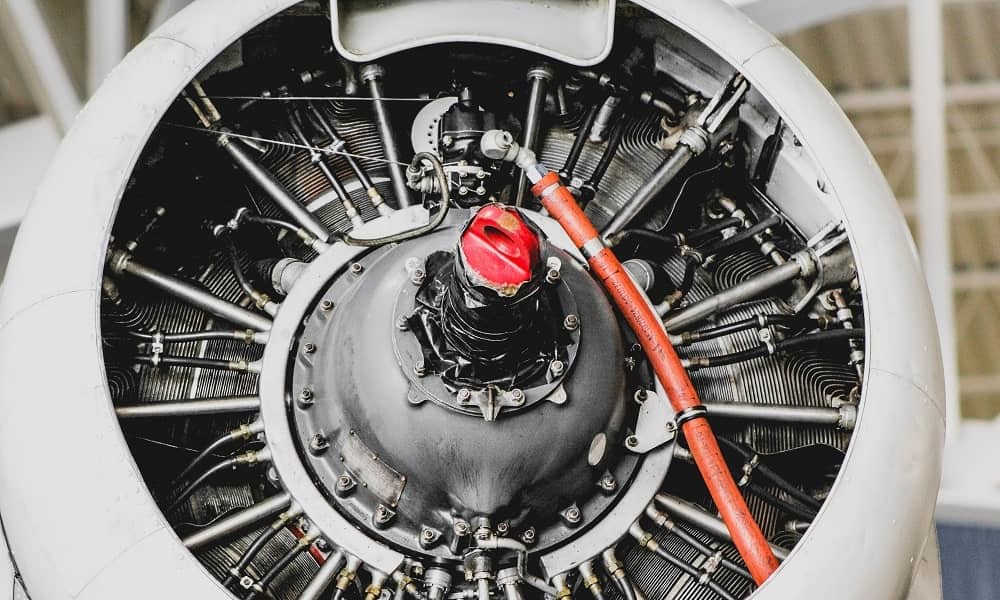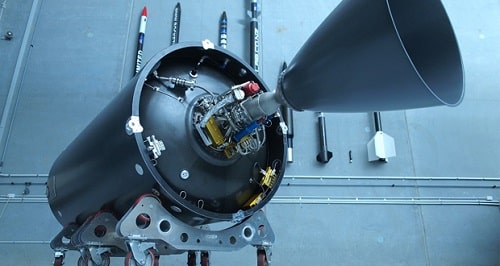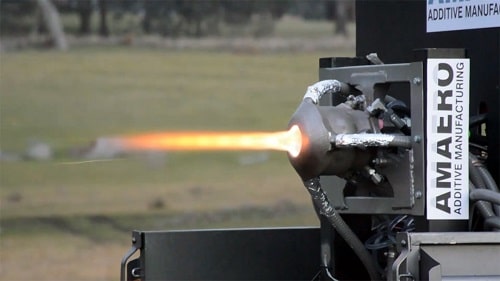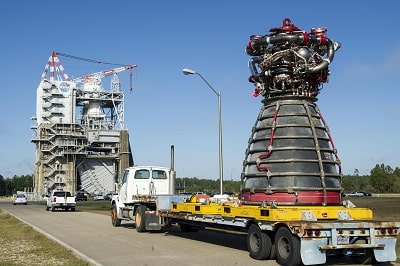Is the 3D printed engine a reality?
Posted By Lucie Gaget on Aug 18, 2020 | 0 comments
3D printing is offering a lot of possibilities for many industries, and aeronautics and aerospatial are some of them. These industries are actually making the most of this technology, both for prototyping and production. New opportunities are constantly offered to these industries with the development of new advanced technologies and materials. Many mechanical items can be created thanks to additive manufacturing, such as engine parts for an aircraft, a rocket, or a car! In this blogpost, we will discuss 3D printed engines. First, we will see how 3D printing is helping to create mechanical parts, and how it is now possible to produce a 3D printed engine, thanks to the variety of 3D printing materials available on the market. Let’s see what could be improved thanks to this technology and get ready for space exploration!
Additive manufacturing used in aerospace, aeronautics & automotive
Why could 3D printing an engine be a great advantage?
This advanced manufacturing process can really be a great asset for engine component production. Using 3D printers for prototyping and for production has many advantages and could help you to improve your product development, optimizing volumes and performance, creating parts with intricate geometries, and great aerodynamic properties.
- Prototyping with 3D printing
Additive manufacturing is known to be a good prototyping method. It is allowing the manufacturers to make many iterations at a lower cost and quite quickly. Moreover, as you have to work on CAD software to create your parts, you only have to make modifications on your 3D file if you need to change something. It will allow you to work way faster than with other processes. Optimize your prototyping process by using materials such as high-performance plastics.
- Production with 3D printing
Additive manufacturing is well used for prototyping, but it is now more and more used for production, even to create mechanical parts! This manufacturing process is totally able to create viable parts for mechanical projects.
Indeed, the 3D printing technology is evolving really fast and many resistant engineering materials are now entering the market. When it comes to aerospace, aeronautics, or even automobile, it is important to have heat resistant parts, especially if you want to produce engine components. In aerospace, additive manufacturing is often used to create lightweight components. It depends on the 3D printing material that is used, but 3D printed structures can be way lighter if the design is well optimized, and if the right material is used.
3D printing becoming a trusted technology
3D printed motor projects are mostly developed in the aerospace industry for the moment, but this trend is quickly spreading to the automotive world. Materials such as metals are widely used in these demanding and technical sectors. Metal 3D printing technologies such as DMLS/SLM are perfect for these projects. But the additive manufacturing industry is now developing and putting on the market new high-performance polymers, already used in these sectors using traditional manufacturing techniques such as CNC machining or injection molding. This way, PA6 FR, PA6 MF, TPU, and Polypropylene are now 3D printable for these sectors.
NASA and the ESA are really interested in this fabrication process, they see all the benefits of this technology and how they could use it for prototyping and for the production of mechanical parts. Indeed, this technology is allowing us to work on designs, and to create complex geometries really easily. That is why this technology is beginning to be interesting for some projects, for example, to manufacture motor parts. A lot of recent NASA tests are including 3D printing technology. We will talk about the RS25 later in this blogpost!
SpaceX is also working a lot with this advanced manufacturing process. This aerospace manufacturer used 3D printing to make spaceflight hardware and actually launched a 3D printed rocket engine to space.
Using 3D modeling software to create mechanical parts to improve your process
In order to prototype or even produce with 3D printing, you will need to use a 3D modeling software for mechanical engineering projects. Indeed, some software on the market dedicated to mechanical engineering that will help you to design technical parts for your rocket engine projects. For example, Autodesk edited different 3D modeling software that could perfectly be used for mechanical engineering, such as Fusion 360 or Inventor. But you can also use software such as CATIA that is a professional software that could help you with complex geometries. We also made selections of software according to the industry you are working in: car design app, and aircraft design software. These programs might offer some interesting features for your projects. More than design and 3D modeling, these software can offer you some great possibilities in terms of simulation, visualization, and rendering, improving your processes and making it easier to develop complex devices.
Manufacturing engines using additive manufacturing
Here are a few examples of engines featuring the use of 3D printing. These could inspire you for your next project. If you have any questions about the services offered by Sculpteo please contact us!
3D printed rocket engine goes into space from New Zealand
This motor has been 3D printed in only 24 hours. This rocket engine has been developed by a US company called RocketLab. Details about the materials and the manufacturing process are not available, but we know that additive manufacturing allowed them to create important engine components really quickly. This process is allowing them to get lighter parts, thanks to an optimized design. Here is how the 3D printed engine made by RocketLab looks:
https://www.3dnatives.com/en/rocket-lab-3d-printed-engine260520174/
Australian engine rocket has successfully been fire tested
Here is another 3D printed engine created by engineers in Australia’s Monash University. 3D printing allowed to create a rocket with a different shape, to improve the propulsion of the rocket. The goal of this experiment was to work on a new design to make the rocket even more efficient, and 3D printing is the best method to improve this aspect really easily.
This manufacturing process definitely allows to work faster: this project went from idea to testing in only four months. In the end, this engine and its aerospace design succeeded the hotfire tests!
Credit: COURTESY OF MONASH UNIVERSITY
3D printed internal combustion engine
Each year, the Shell Eco-marathon invites students from all over the world to compete and develop innovative and energy-efficient vehicles. If 3D printing has been used by some participants, a team from the University of Canterbury in New Zealand created the world’s first 3D printed titanium internal combustion engine (ICE) for their car in this year’s Eco-marathon Asia!
Most of the time, while 3D printing is used in the manufacturing process of engines, only a few components are actually 3D printed. In this precise project, the whole engine has been 3D printed using titanium and runs on sustainable, carbon-neutral ethanol. This project is showing how it is possible to develop innovative solutions, with technologies such as 3D printing.
3D printed Toyota 4 22RE engine
Chinese company Winbo Smart Tech 3D printed a four-cylinder Toyota engine in only three days using FDM 3D printers. This engine is composed of 130 entirely 3D printed parts, to show the potential of 3D printing machines: all kinds of parts are 3D printable and can easily be assembled.
Engineers working for NASA are prototyping a rocket engine
Additive manufacturing is an amazing tool to make prototypes. Prototyping with metal 3D printing is now possible, but using this technology to print with two different materials is still difficult. But for NASA engineers, difficult doesn’t mean impossible. They actually created a rocket engine prototype using two different metals: copper alloy and Inconel. They used a process called brazing, in order to join 2 different types of metal, creating a brand new component. This advanced process is offering promising possibilities for future 3D printed metal parts.
SuperDraco, an engine made thanks to additive manufacturing
SpaceX is known to use 3D printing a lot. They actually built a rocket engine using 3D printing, it is called SuperDraco. This process has been used on different levels. First, for testing, 3D printing has been used instead of the traditional casting method. 3D printing has also been an advantage for the manufacturing process, and it really reduced the lead-time. The 3D printed parts were even more resistant than traditional ones.
3D printing: A way to reduce costs for NASA
Creating motor parts using 3D printing is actually helping NASA to reduce engine costs. Indeed, it is allowing them to get more affordable parts. 3D printing complex shapes in just one part allows to avoid welds. Indeed, optimizing the design helps to reduce the number of welds, and it can obviously reduce costs and production time. That is why this manufacturing process will be more and more used in the future to build rocket engines for NASA tests.
3D printing is really seen as a serious technology. It has even been part of the recent RS25 tests. The RS25 engine is the most powerful rocket engine ever created. This Space Launch System has a 3D printed component called pogo accumulator, a shock absorber placed inside of the rocket engine.
https://www.nasa.gov/press-release/nasa-prepares-to-fly-first-rs-25-flight-engine-test-set-for-march
The future of 3D printing for engines
New 3D printers and new 3D printing materials are now appearing on the market, allowing to manufacture impressive projects. For example, metal 3D printing is becoming more and more accurate, which is a real game-changer for many industries. Printer manufacturers are also developing large-scale 3D printers. Instead of components, it will be possible to print larger parts more easily. Last but not least, more and more impressive 3D printing materials are developed each year, which makes the future of 3D printing really promising! Projects developed with 3D printing are always getting more ambitious, pushing the boundaries of manufacturing. This is proof that this additive process is making it possible to improve product development and the product itself very easily.
You need to 3D print a project, for prototyping or production? Upload your 3D file on our online 3D printing service right now.


 Connect with Google
Connect with Google Connect with Facebook
Connect with Facebook


